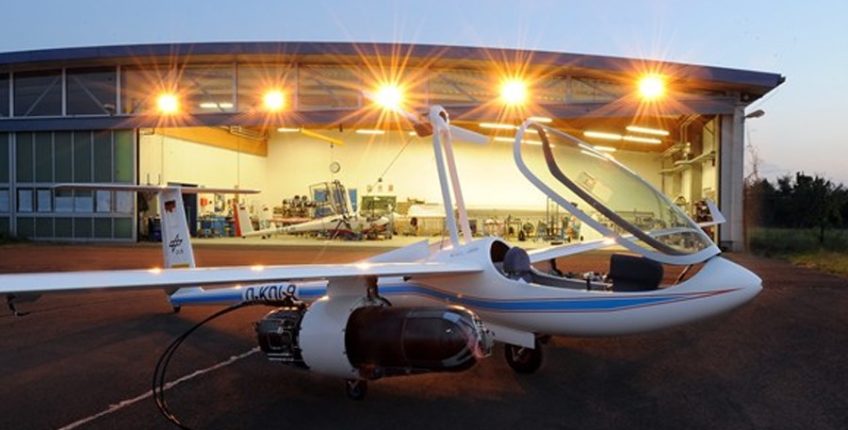The Antares H3 project’s goal involved the development of a research aircraft with fuel cells. The aircraft is based on the world’s first electric plane in series production, the Antares 20E, and continues to build on the experience of the world’s first fuel cell-based plane capable of taking off independently, the Antares H2.
Antares H3 is a single-seater plane with a wingspan of 23m, maximum take-off weight of 1,650 kg including a 200 kg payload and maximum flight duration of 40 hours. The Antares E2 is capable of conducting civil tasks in the area of “remote sensing” either manned or unmanned. The system is especially well suited for undertaking maritime tasks such as fisheries monitoring and environmental protection as well as for search and rescue missions.
Four external pods are placed under the aircraft’s wings. These contain the fuel cells, reformer fuel and portions of the payload. The fuel cell system selected was a HT PEM fuel cell with methanol reformer. The reformer works with a methanol-water mix. The water is to be extracted from the exhaust air and fed back to the reformer fuel again. Six highly efficient electric motors were installed above the wings.
Compared with modern combustion engines, the fuel cell mass is high. Yet the longer the flight duration is, the more the mass of reformer fuel carried gains in significance. The highly efficient power yield – as is achieved in the fuel cell system used – not only balances the high fuel cell mass, during longer flights it also provides advantages over combustion engines. The Antares H3 project builds on this principal.
Furthermore, energy requirements while in flight remain very low due to the aircraft’s exceptional aerodynamics. Because of the compact design and low mass of the highly efficient electric propulsion motors, the principle of distributed drives could be selected, which permits extremely high propeller and installation efficiency.
The Antares H3 project demonstrates that fuel cell aircraft is already suitable for applications requiring long flight times, with the implementation of existing technology. With support from the NIP, both pure fuel cell technologies as well as aircraft-specific technologies had to be developed significantly further. Antares H3 is approaching completion and its maiden flight is scheduled for the third quarter of 2017.
Funding Code
03BV116
| Partner | Start of term | End of term | Funding amount |
| Lange Research Aircraft GmbH | 01.03.10 | 31.12.16 | 1,926,518.12 € |
| Deutsches Zentrum für Luft- und Raumfahrt e.V. | 01.03.10 | 15.09.15 | 3,432,461.66 € |
| 5,358,979.78 € |


